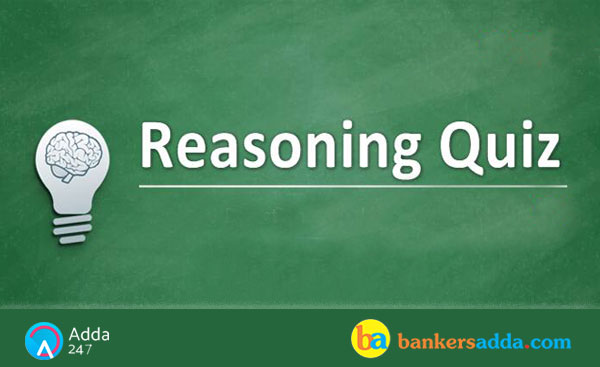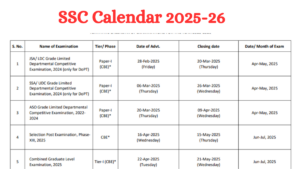
Q1. If in each number, all the three digits are arranged in ascending order within the number, which of the following will be the second highest number?
247, 459, 569, 347, 456
Second highest is 459 i.e. 549
Q2. If last two digits are inter changed in each number and after that 2 is subtracted from the first digit, which number will be highest?
Interchange last two digits: 427 594 695 473 654
Subtract two from first digit: 227 394 495 273 454
Highest number is 495 i.e. 659
Q3. If the position of first and third digits of the numbers are interchanged, in how many numbers thus formed with the last digit be a perfect square?
Q4. What will be result if first digit of second highest number and third digit of second lowest number are multiplied?
their product = 6 × 2 = 12
Q5. If in each number, all the three digits are added, the total of which of the following numbers will be the second highest?
13 18 20 14 15
Second highest is 18 i.e. 549.
Directions (6-10): Study the following information carefully and answers the questions given below:
Eight Indian army soldiers viz. L, M, N, O, P, Q, R and S are sitting in a straight line facing north. They are meeting at the training camp. They are from different regiments viz. Kumaon, Assam, Bihar, Jat, Gorkha, Dogra, Rajput and Punjab but not necessarily in the same order.
Q sits third to the right of the person who is from Gorkha regiment. The person who is from Punjab regiment sits second to the right of Q. L and M are immediate neighbors of each other. Neither L nor M is an immediate neighbor of Q.R sits third to the right of the person who is from Kumaon regiment. Neither L nor M is from Kumaon regiment and Jat regiment. The one who is from Rajput regiment sits third to the right of M. The person who is from Assam regiment sits to the immediate left of S. Only one person sits between M and O. N sits second to the left of the one who is from Rajput regiment. Q does not belong to Rajput regiment. L sits at one of the extreme end. M does not belong to Bihar regiment.
Q6. R belongs to which of the following regiment?
ii- Only one person sits between M and O so Case 2 will be eliminated. R sits third to the right of the person who is from Kumaon regiment. The person who is from Assam regiment sits to the immediate left of S. Neither L nor M is from Kumaon regiment or Jat regiment. M does not belong to Bihar regiment. So the final arrangement is-
Q7. Who amongst the following sits exactly between M and O?
i. It is given that Q sits third to the right of the person who is from Gorkha regiment. The person who is from Punjab regiment sits second to the right of Q. L and M are immediate neighbors of each other. Neither L nor M is an immediate neighbor of Q. The one who is from Rajput regiment sits third to the right of M. N sits second to the left of the one who is from Rajput regiment. Q does not belong to Rajput regiment. L sits at one of the extreme end .So there can be two possibilities-
ii- Only one person sits between M and O so Case 2 will be eliminated. R sits third to the right of the person who is from Kumaon regiment. The person who is from Assam regiment sits to the immediate left of S. Neither L nor M is from Kumaon regiment or Jat regiment. M does not belong to Bihar regiment. So the final arrangement is-
Q8. 'R' is related to 'Rajput regiment' in a certain way based on the above arrangement. 'O' is related to 'Dogra regiment' following the same pattern. How is related to 'Gorkha regiment' following the same pattern?
i. It is given that Q sits third to the right of the person who is from Gorkha regiment. The person who is from Punjab regiment sits second to the right of Q. L and M are immediate neighbors of each other. Neither L nor M is an immediate neighbor of Q. The one who is from Rajput regiment sits third to the right of M. N sits second to the left of the one who is from Rajput regiment. Q does not belong to Rajput regiment. L sits at one of the extreme end .So there can be two possibilities-
ii- Only one person sits between M and O so Case 2 will be eliminated. R sits third to the right of the person who is from Kumaon regiment. The person who is from Assam regiment sits to the immediate left of S. Neither L nor M is from Kumaon regiment or Jat regiment. M does not belong to Bihar regiment. So the final arrangement is-
Q9. Which of the following is true regarding S?
i. It is given that Q sits third to the right of the person who is from Gorkha regiment. The person who is from Punjab regiment sits second to the right of Q. L and M are immediate neighbors of each other. Neither L nor M is an immediate neighbor of Q. The one who is from Rajput regiment sits third to the right of M. N sits second to the left of the one who is from Rajput regiment. Q does not belong to Rajput regiment. L sits at one of the extreme end .So there can be two possibilities-
ii- Only one person sits between M and O so Case 2 will be eliminated. R sits third to the right of the person who is from Kumaon regiment. The person who is from Assam regiment sits to the immediate left of S. Neither L nor M is from Kumaon regiment or Jat regiment. M does not belong to Bihar regiment. So the final arrangement is-
Q10. Who amongst the following is from Dogra regiment?
i. It is given that Q sits third to the right of the person who is from Gorkha regiment. The person who is from Punjab regiment sits second to the right of Q. L and M are immediate neighbors of each other. Neither L nor M is an immediate neighbor of Q. The one who is from Rajput regiment sits third to the right of M. N sits second to the left of the one who is from Rajput regiment. Q does not belong to Rajput regiment. L sits at one of the extreme end .So there can be two possibilities-
ii- Only one person sits between M and O so Case 2 will be eliminated. R sits third to the right of the person who is from Kumaon regiment. The person who is from Assam regiment sits to the immediate left of S. Neither L nor M is from Kumaon regiment or Jat regiment. M does not belong to Bihar regiment. So the final arrangement is-
Directions (11-15): In these questions, relationships between elements are shown in the statements.
You may also like to read:





 The Hindu Review October 2022: Download ...
The Hindu Review October 2022: Download ...
 SSC Calendar 2025-26 Out, Check SSC CGL,...
SSC Calendar 2025-26 Out, Check SSC CGL,...
 IRDAI Assistant Manager Score Card 2024 ...
IRDAI Assistant Manager Score Card 2024 ...




